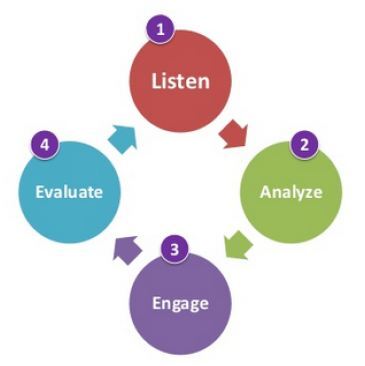20 Social Media Holidays to Celebrate This May
By Yasmin PierreApr 10
Unlock the secrets to staying ahead in the ever-evolving world of social media marketing.
Joakim Nilsson is a Social CRM Strategist helping brands do better business in today’s transparent and digitally connected world. Specifically in the areas of social media monitoring, analytics & measurement, campaign design, vendor selection and community management.
He’s also the Product Manager of Unified Inbox as well as Co-Owner of AvalanShare, a small start-up building a campaign tool for social sharing.

I think it’s absolutely amazing what we marketers can do with tools and technologies these days.
There’s no shortage of data and information we can track and monitor, and there are plenty of great tools (such as Brandwatch) helping us deliver and interpret this information.
However, data and information is nothing more than just that unless it is acted upon. Especially when it comes to social media monitoring, companies need to have a process in place for making use of all the social media monitoring data they find.
A few times I’ve bumped into companies that use fantastic (and expensive) social media monitoring tools, or agencies, only to find that all that happens is an executive is left with a social media monitoring ‘report’ collecting dust on his desk.
My point is is this: you shouldn’t invest in social media monitoring just to tick off a box. You should invest in it because you want to act on the data, and ultimately do better business with your customers and prospects.
A simple-to-implement 4-step process
You really don’t want to be that company that spends money on a social media monitoring tool but does nothing with it, so here’s a 4-step process that is both simple to follow and simple to implement in your organisation, yet will help you do better business:
1. Listen
2. Analyze
3. Engage
4. Evaluate

Listen
The first thing I’d advise you to do is identify your customers and prospects on the web.
Use your social media monitoring solution to search for your brand and product-related terms to figure out where on the internet people are mentioning you. You want to figure out who they are, and where they are.

Analyze
Knowing where they are and who they are is essential. But the next step is to look into what these people are actually saying.
Are they complaining or praising your products? Can you find any worthy feedback, suggestions or ideas?
Is anything being said about your competition, and how does that relate to you?
Based on what you find in your social media monitoring data, you need to use this information and turn it into opportunities.
Are people complaining about your products and services? Then there’s an opportunity for your customer service team to step in and help. Your product department would probably also be interested in this type of information.
Did you find product feedback? Then there’s an opportunity to make sure that such information reaches the correct internal stakeholder.
Were competitors mentioned in the same conversations as your brand? Could there be an opportunity to sell?

Engage
As you’ve seen in the above examples, it’s possible to create plenty of opportunities from social media monitoring data. Now your job is to take these opportunities and define actionable tasks to execute.
Take the case of customers complaining on social media; this is an opportunity for your customer service team to rectify issues. However, this requires that you develop a program of education and clear processes of how your customer service team should engage in social media.
Product feedback only reaches the right people in the organisation if there’s a process in place. Your task is now to ensure such process exists.
How about setting up a daily report with mentions that include competitors and deliver it to your sales department?
By looking at your social media monitoring data and analyzing the opportunities, you should be able to come up with good actionable tasks that will help you do better business.

Evaluate
So how do you ensure that the things you take action on actually make you do better business? It’s a delicate exercise of value attribution which is not always straightforward.
But if we look at the examples above, we can easily identify a few desirable outcomes:
Offering up analysis and data on everything from the events of the day to the latest consumer trends. Subscribe to keep your finger on the world’s pulse.
Consumer Research gives you access to deep consumer insights from 100 million online sources and over 1.4 trillion posts.
Existing customer?Log in to access your existing Falcon products and data via the login menu on the top right of the page.New customer?You'll find the former Falcon products under 'Social Media Management' if you go to 'Our Suite' in the navigation.
Brandwatch acquired Paladin in March 2022. It's now called Influence, which is part of Brandwatch's Social Media Management solution.Want to access your Paladin account?Use the login menu at the top right corner.



